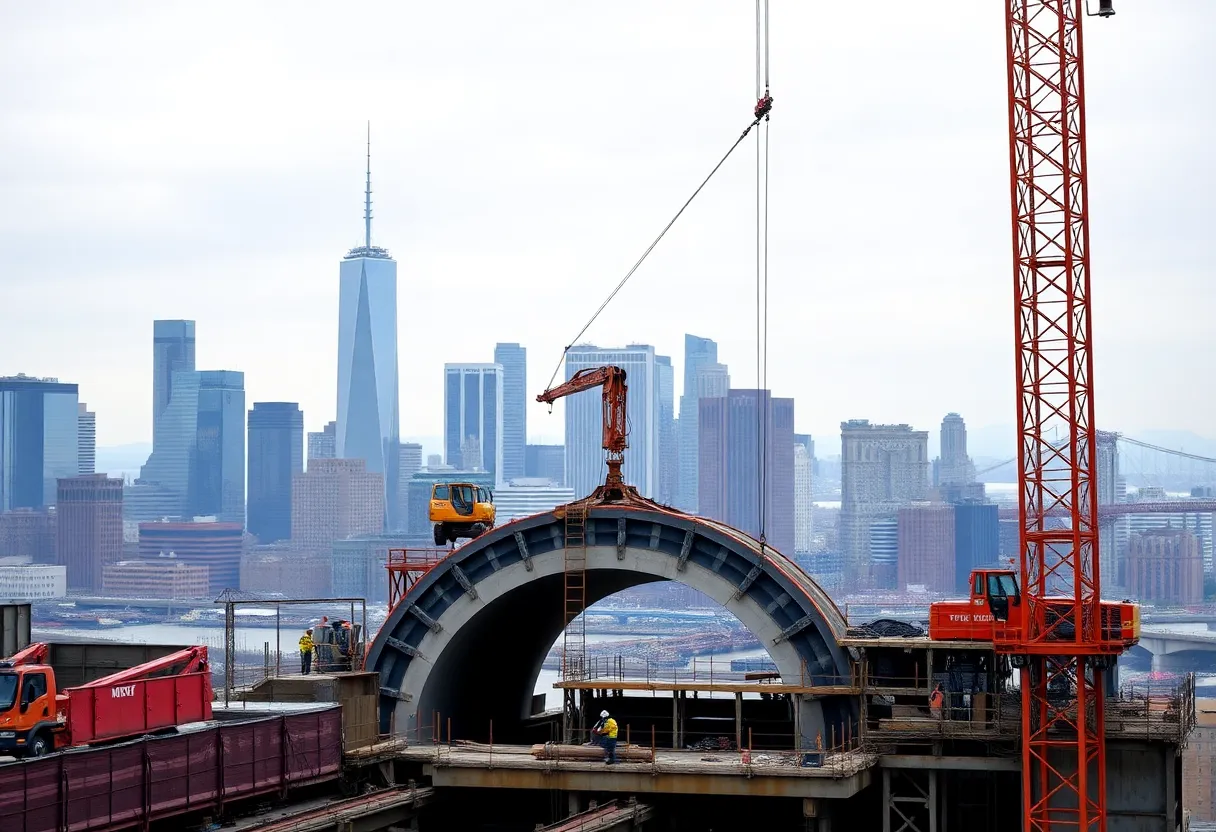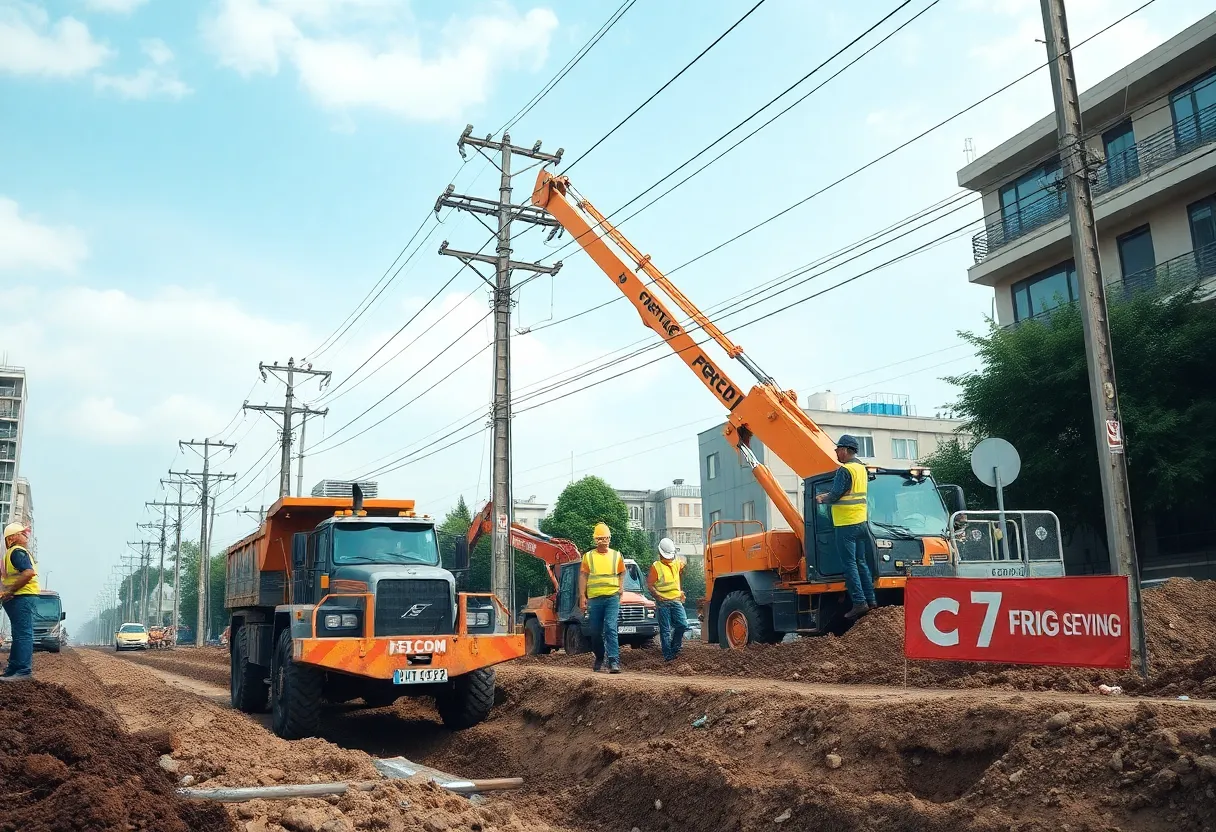News Summary
The Trump administration has revised its strategy on union labor policies for federal construction projects, following a court ruling that challenges previous exemptions. This change aims to clarify project labor agreements (PLAs) guidelines and is influenced by a key legal decision, promoting a balance between union labor engagement and federal contracting complexities. The administration now seeks to support PLAs where practical, while also addressing legal challenges and ensuring consistency in regulations.
Trump Administration Adjusts Its Approach to Union Labor Rules for Federal Projects
The Trump administration has recently made significant changes regarding union labor rules for federal contractors working on major construction projects. This shift comes in response to a federal court ruling that intervened in the administration’s initial stance, which aimed to roll back Biden-era policies that favored unionized labor.
Biden’s Executive Order on Project Labor Agreements
In 2022, the Biden administration enacted an executive order mandating federal contractors to sign project labor agreements (PLAs) with subcontractors and associated unions for construction projects valued at over $35 million. This policy was structured to promote labor peace and ensure that work on major projects is completed without strikes or disputes. By January 2024, a final rule implementing this executive order was published by the Federal Acquisition Regulatory Council.
Initial Actions by the Trump Administration
Initially, the Trump administration responded to this executive order by issuing memos that exempted key projects governed by the Defense Department and General Services Administration from the PLA requirements. These memos also stated that contract opportunities already in solicitation would also be exempt. However, these actions sparked a series of legal challenges due to concerns that they contradicted the intent of Biden’s executive order.
Court Intervention
The situation escalated in May, when U.S. District Judge Rudolph Contreras issued a preliminary injunction against the Trump administration’s memos. The judge indicated that these memos were effectively nullifying the requirements of Biden’s executive order without evaluating the circumstances of each case individually. This legal ruling forced a reconsideration of the administration’s approach to PLAs.
Exposure of Confusion within the Trump Administration
In the aftermath of the court’s decision, Russell Vought, director of the Office of Management and Budget, communicated that the administration supports the utilization of PLAs, provided they are feasible and cost-effective. He expressed concern that some agencies had issued overly broad exceptions to the Federal Acquisition Regulation regarding PLAs, leading to ambiguity in the administration’s position on this crucial matter.
Criteria for Exemptions from PLAs
The Federal Acquisition Regulation allows exemptions from PLA requirements if thorough market research indicates that including these agreements would result in a significant reduction of potential bids. In response to the recent court ruling, Vought revised the Office of Management and Budget memorandum concerning PLAs, clarifying the situations in which exemptions can be granted. Specifically, exemptions would be justified if it’s expected that only two or fewer bidders will participate, or if adhering to the PLA requirement would increase project costs by more than 10 percent.
Future Considerations and Consistency in Guidelines
Moving forward, the Trump administration is set to reevaluate its guidelines related to PLAs, with an emphasis on ensuring that agency interpretations align consistently with the updated directive. Federal agencies have been instructed to include PLAs in their projects when it is practical and cost-effective to do so, while also revoking previous deviations that caused confusion regarding their implementation.
Impact on Federal Construction Projects
This adjustment in policy is expected to have notable implications for future federal construction projects. By clarifying the conditions under which PLAs can be enforced, the Trump administration aims to balance the need for labor stability on large-scale infrastructure initiatives with the necessity of maintaining competitive bidding processes.
Conclusion
The evolving stance of the Trump administration in the context of union labor rules reflects an ongoing debate about the role of organized labor in federal construction projects. As legal and administrative adjustments unfold, stakeholders in the construction industry, including contractors and unions, will watch closely to see how these policies will ultimately shape the landscape of federal contracting.
Deeper Dive: News & Info About This Topic
Additional Resources
- Government Executive: Trump Administration Narrows Effort to Nix Project Labor Agreements
- Reuters: US Court Pauses Block on Trump Eliminating Union Bargaining for Federal Workers
- Bloomingtonian: Analysis of Trump’s Order Ending Worker Input at VA
- The Hill: Vital Questions for Trump’s Top Labor Lawyer Nominee
- Union Leader: Hassan Convinces Trump Administration to Keep Dept. of Labor Office Open
Author: Construction NY News
The NEW YORK STAFF WRITER represents the experienced team at constructionnynews.com, your go-to source for actionable local news and information in New York and beyond. Specializing in "news you can use," we cover essential topics like product reviews for personal and business needs, local business directories, politics, real estate trends, neighborhood insights, and state news affecting the area—with deep expertise drawn from years of dedicated reporting and strong community input, including local press releases and business updates. We deliver top reporting on high-value events such as the New York Build Expo, infrastructure breakthroughs, and cutting-edge construction technology showcases. Our coverage extends to key organizations like the Associated General Contractors of New York State and the Building Trades Employers' Association, plus leading businesses in construction and real estate that power the local economy such as Turner Construction Company and CMiC Global. As part of the broader network, including constructioncanews.com, constructiontxnews.com, and constructionflnews.com, we provide comprehensive, credible insights into the dynamic construction landscape across multiple states.





